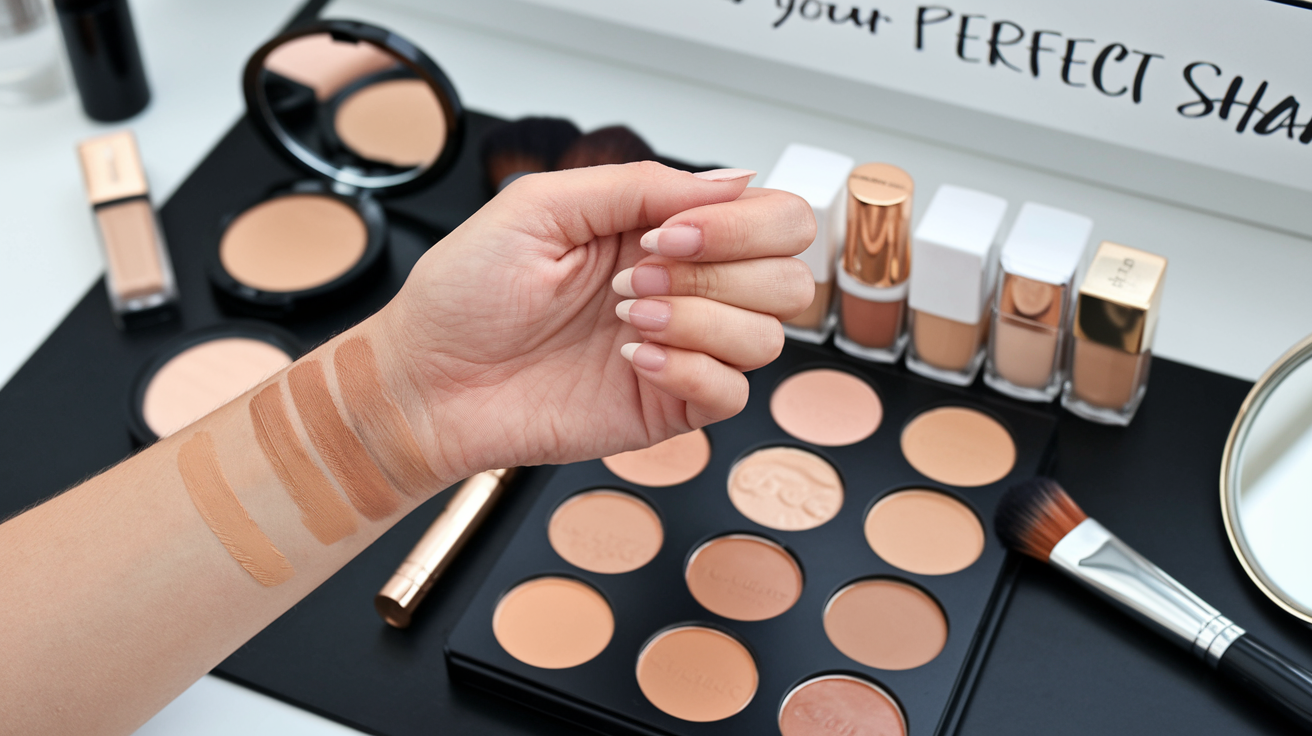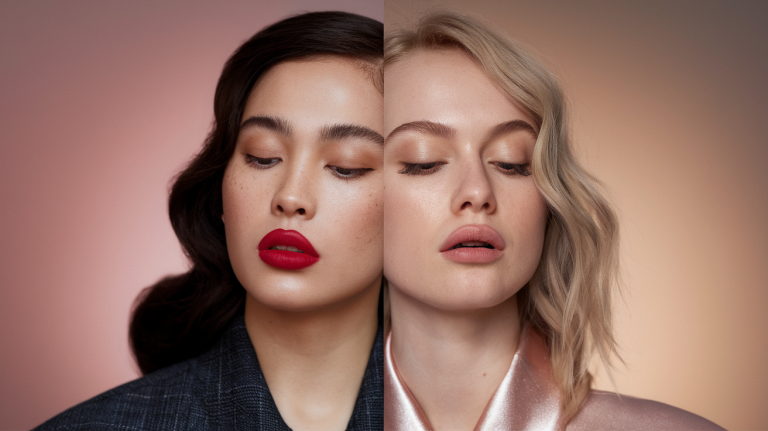Have you ever stood in front of a mirror, frustrated by the visible line between your jawline and neck? Or perhaps you’ve experienced the dreaded “mask-like” effect that screams mismatched foundation? 😩 If so, you’re not alone. Finding the perfect foundation shade can feel like searching for a needle in a haystack.
But fear not! 🌟 The days of foundation faux pas are over. Whether you’re a makeup novice or a beauty enthusiast, mastering the art of choosing the right foundation shade is a game-changer. It’s the key to achieving that coveted flawless, natural-looking complexion we all desire.
In this guide, we’ll unveil the secrets to selecting your ideal foundation shade. From decoding your skin tone to navigating the vast world of foundation formulations, we’ll cover everything you need to know. Get ready to discover techniques for foolproof shade matching and even learn how to customize your perfect shade. Say goodbye to makeup mishaps and hello to a radiant, confidence-boosting base!
Understanding Your Skin Tone
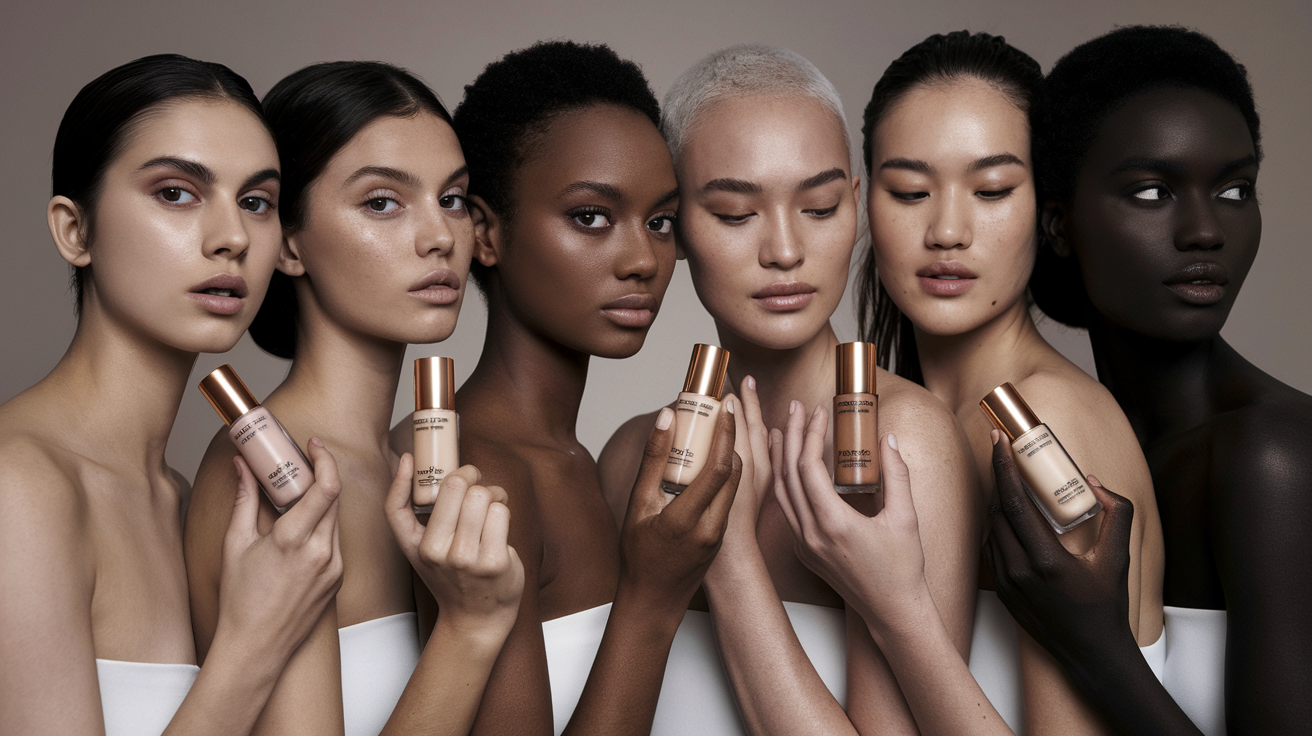
Identifying warm, cool, or neutral undertones
Understanding your skin’s undertone is crucial for selecting the perfect foundation shade. There are three main categories:
- Warm undertones: Golden, peachy, or yellow hues
- Cool undertones: Pink, red, or blue hues
- Neutral undertones: A balance of warm and cool
To determine your undertone, try these simple tests:
- Vein test: Look at the veins on your wrist
- Jewelry test: Observe which metal complements your skin
- White paper test: Hold a white paper next to your face
| Test | Warm Undertone | Cool Undertone | Neutral Undertone |
|---|---|---|---|
| Vein | Green or olive | Blue or purple | Both colors visible |
| Jewelry | Gold looks best | Silver looks best | Both metals suit |
| White paper | Skin appears yellowish | Skin appears pinkish | No noticeable contrast |
The role of surface tone in foundation selection
Surface tone refers to the visible color of your skin, which can range from very fair to deep. While undertone remains constant, surface tone can change due to factors like:
- Sun exposure
- Seasonal changes
- Hormonal fluctuations
When selecting foundation, consider both your undertone and surface tone for the most natural-looking result.
How lighting affects skin tone perception
Lighting plays a significant role in how we perceive skin tone:
- Natural daylight: Provides the most accurate representation
- Fluorescent light: Can make skin appear more cool-toned
- Incandescent light: Tends to warm up skin tones
To ensure the best match, test foundation shades in different lighting conditions before making a final decision. This practice will help you avoid the dreaded mismatched foundation look and ensure a flawless finish in various settings.
Techniques for Shade Matching
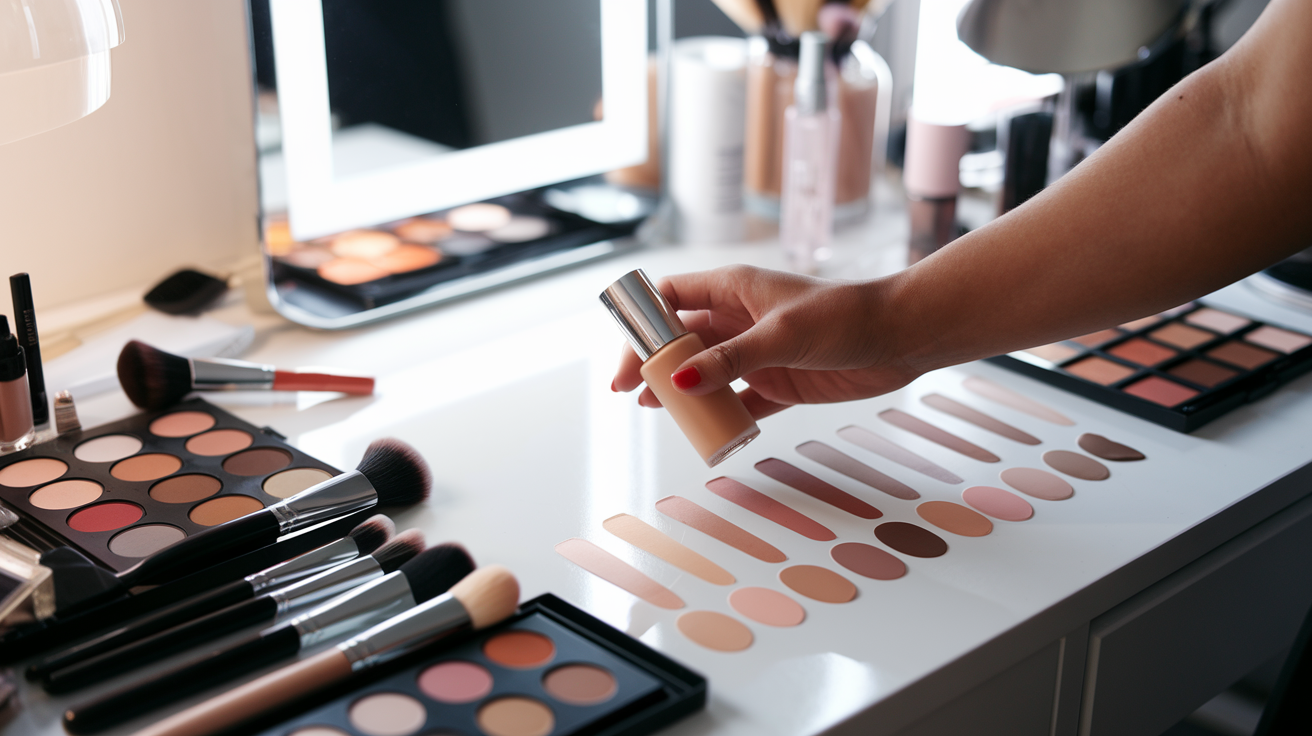
Swatching methods for accurate color matching
When it comes to finding your perfect foundation shade, swatching is an essential technique. Here are some effective methods:
- Jawline test: Apply a small amount of foundation along your jawline.
- Neck test: Swatch the foundation on your neck for a seamless blend.
- Chest test: Match the foundation to your chest area for a cohesive look.
| Swatching Area | Pros | Cons |
|---|---|---|
| Jawline | Most common, easy to see | May not match neck or chest |
| Neck | Ensures face-neck match | Can be challenging to see |
| Chest | Good for overall body match | May not work for all necklines |
The importance of testing in natural light
Natural light is crucial for accurately assessing your foundation match. Here’s why:
- Reveals true color without artificial light distortion
- Helps identify oxidation effects on the foundation
- Ensures the shade looks good in various settings
To test in natural light:
- Apply foundation swatches
- Step outside or near a window
- Check the match after 5-10 minutes
Seeking professional help at makeup counters
Professional assistance can be invaluable in finding your perfect shade. Makeup artists at cosmetic counters offer:
- Expert color matching using specialized tools
- Advice on formulations suitable for your skin type
- Samples to test at home before purchasing
Remember to communicate your preferences and concerns to the makeup artist for the best results. With these techniques, you’ll be well-equipped to find your ideal foundation shade. Next, we’ll explore the various foundation formulations available and how they can affect your shade selection.
Navigating Foundation Formulations
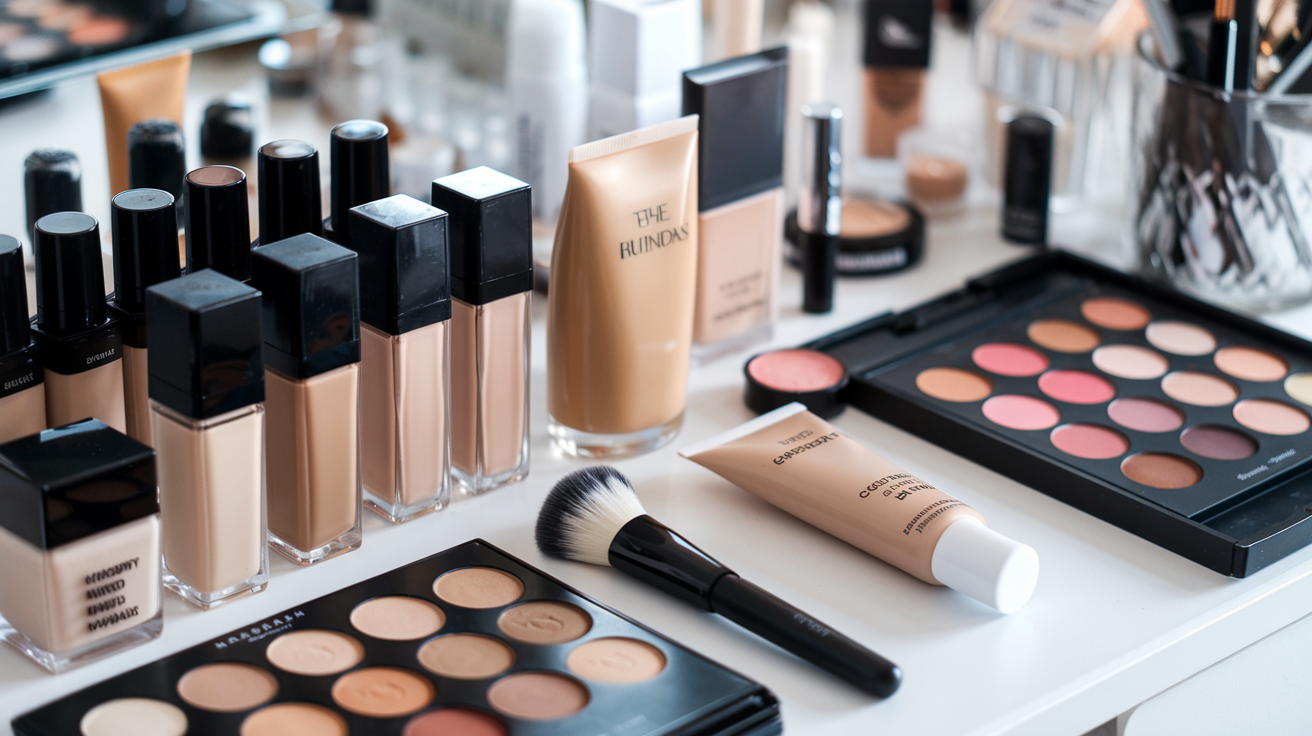
Liquid, powder, and cream foundations
When it comes to foundation formulations, there are three main types to consider:
- Liquid foundations
- Powder foundations
- Cream foundations
Each type has its unique characteristics and benefits, catering to different skin types and preferences. Here’s a comparison of these foundation formulations:
| Foundation Type | Best for Skin Type | Coverage | Application Method |
|---|---|---|---|
| Liquid | Normal to dry | Light to full | Brush, sponge, fingers |
| Powder | Oily to combination | Light to medium | Brush or sponge |
| Cream | Dry to normal | Medium to full | Brush, sponge, fingers |
Full coverage vs. sheer formulas
The level of coverage you choose depends on your skin concerns and the look you want to achieve:
- Full coverage: Ideal for concealing blemishes, hyperpigmentation, or uneven skin tone
- Medium coverage: Balances natural skin appearance with moderate concealing power
- Sheer coverage: Provides a subtle, barely-there look that enhances your natural complexion
Matte, dewy, and natural finishes
The finish of your foundation can dramatically impact your overall look:
- Matte finish: Best for oily skin, reduces shine and creates a smooth, velvety appearance
- Dewy finish: Ideal for dry or mature skin, imparts a healthy, radiant glow
- Natural finish: Suitable for all skin types, mimics the skin’s natural texture
Now that we’ve explored foundation formulations, let’s move on to customizing your perfect shade for a flawless makeup application.
Customizing Your Perfect Shade
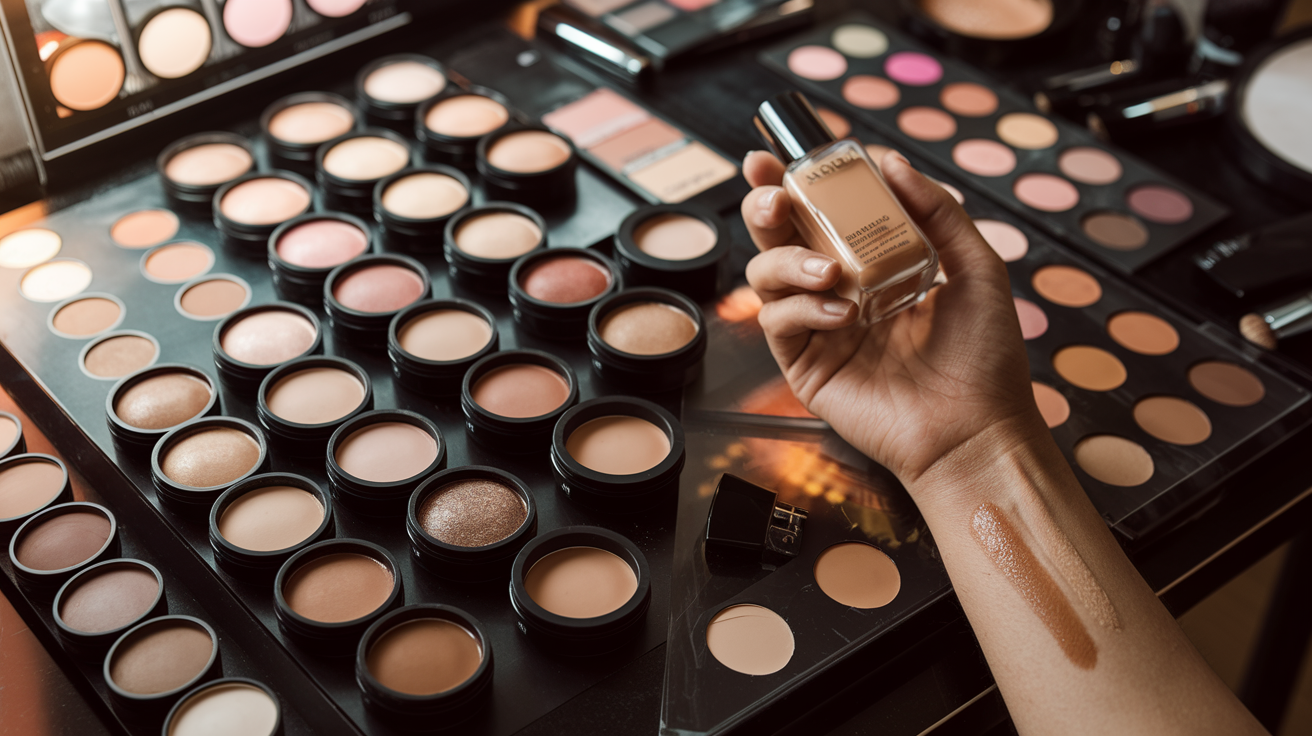
Mixing multiple foundation shades
When it comes to achieving your perfect foundation match, sometimes one shade isn’t enough. Mixing multiple foundation shades allows for a custom blend that perfectly suits your unique skin tone. Here’s how to do it effectively:
- Start with two shades: one lighter and one darker than your skin tone
- Mix small amounts on the back of your hand or a palette
- Adjust the ratio until you achieve the desired shade
- Test the mixture on your jawline for accuracy
Using color adjusting drops
Color adjusting drops are a game-changer for foundation customization. These concentrated pigments can alter the undertone or depth of your foundation:
| Drop Color | Effect |
|---|---|
| Blue | Cools and neutralizes orange tones |
| Green | Cancels out redness |
| White | Lightens the shade |
| Bronze | Deepens and warms the shade |
The role of primers in shade perfection
Primers not only improve foundation longevity but can also influence its final appearance:
- Color-correcting primers address specific skin concerns
- Illuminating primers add a subtle glow beneath foundation
- Tinted primers can slightly adjust foundation shade
Setting powders: translucent vs. tinted options
The right setting powder can enhance your foundation’s appearance:
- Translucent powders: Suitable for most skin tones, they set makeup without altering color
- Tinted powders: Can further adjust foundation shade and provide additional coverage
Choose based on your desired finish and any final color adjustments needed. Remember, the key to a flawless foundation is experimentation and finding what works best for your unique skin.
Choosing the perfect foundation shade is a crucial step in achieving a flawless makeup look. By understanding your skin tone, mastering shade matching techniques, and exploring different foundation formulations, you can find the ideal product that seamlessly blends with your natural complexion. Remember that customizing your shade may be necessary, especially as your skin tone changes throughout the year.
Don’t be afraid to experiment with different shades and formulations until you find your perfect match. When in doubt, seek assistance from makeup professionals or take advantage of samples to test shades in various lighting conditions. With these tips in mind, you’ll be well on your way to achieving a radiant, natural-looking foundation that enhances your unique beauty.

